Šapinuwa (Ortaköy)
Q3620Šapinuwa: Bronze Age Hittite city, one of the major Hittite military, religious, and administrative centres. It is situated near modern Ortaköy in Turkey.
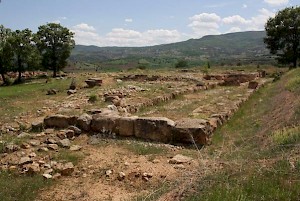
Ortaköy, the place where Šapinuwa was found, is situated sixty kilometers east of Hattusa, the capital of the Hittite Empire. It is more or less on the place where the ancient road from Hattusa to the east branched into two, one road leading eastward to Zela, the other northeastward to Amasia. Both roads reached the valley of the river Kelkit (ancient Lykos), which connects Central Anatolia to the Caucasus. Alternatively, one could proceed from Amasia to the Black Sea.
A linguistic argument may help us date the city’s foundation. In the first place, the name “Šapinuwa” appears to be Hattic and may mean “the gods’ country”. Many texts found in the city are also in Hattic, while it is situated between Nerik and Hattusa, both towns where the original population spoke Hattic. This would suggest that Šapinuwa was founded by Hattians who were subjected when the (Nesian speaking) Hittites conquered Nerik and Hattusa too. They continued to venerate the storm god of Šapinuwa, who was invoked together with the storm god of Nerik.
The city was surrounded by a “Cyclopean” wall of irregular stones, which has been found near Building A, where 3,000 cuneiform tablets were found, belonging to three archives. They include letters, texts describing purification rituals, vocabularies. Building A is very well built and may have been used as governmental building.
Building B, about 150 meters southeast of Building A, was a storage, where some thirty big jars were found. In a third building, archaeologists found an orthostat with a portrait of a man that resembled the representation of Tudhaliya IV in Yazilikaya.
The excavators believe that Šapinuwa served as residence of the Hittite kings in the fifteenth century, during the intermezzo between the Old and the New Kingdom. Most of the clay tablets in Building A seem to date from the early fourteenth century. They were baked during a big fire, which may have been caused by attacking Kaska nomads from the north. The results of radiocarbon dating appear to have been inconclusive.
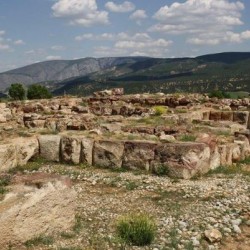 Sapinuwa, Building A, room |
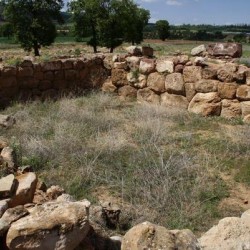 Sapinuwa, Building A, room |
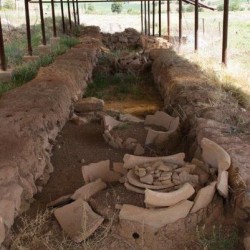 Sapinuwa, Storage room |
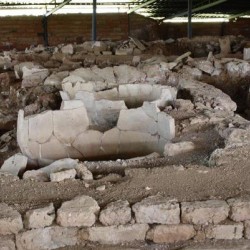 Sapinuwa, Room B, jars |